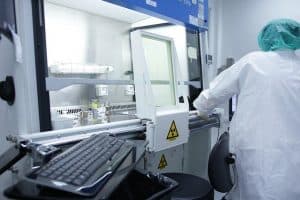
The life sciences industry can optimize data insights to improve pharmacovigilance processes using AI, ML, and Natural Language Processing.
Clinical trials are necessary to bring new treatments to patients. Well-crafted trials are key to ensuring the safety of patients and the ultimate viability of new drugs. Contrary to what many might assume, the drug development cycle does not end once a product has been approved and brought to market.
Life science organizations are constantly monitoring the efficacy and safety of a drug once it is being used by patients – this practice is commonly known in the life science industry as pharmacovigilance (PV). PV is an integral part of the drug development process, as well as ongoing monitoring. This entails the collection and analysis of adverse events (AEs) – these are undesirable experiences following a patient’s use of a given drug. By identifying, analyzing, and reporting AEs to relevant authorities, life science organizations are complying with best practices as well as regulatory requirements to meet their ethical obligations to ensure patient safety.
See also: 4 Ways Real-time Big Data Improves Pharma’s Bottom Line
A New Approach to Identifying Adverse Events
Approximately 80% of healthcare data resides in unstructured formats like emails and paper documents. Today, unstructured data on AEs needs to be aggregated and correlated from disparate and expansive data sources, including social media, email, online communities, and other digital formats. Currently, most PV and safety professionals need to review AE data by going through inefficient manual processes. This can slow down clinical trials and potentially delay the delivery of new medications to patients.
The introduction of artificial intelligence (AI), machine learning (ML), and natural language processing (NLP) tools to the life sciences industry is making it possible to take these large, unstructured data sets and turn them into actionable insights at unprecedented speeds. Investment in AI and ML in healthcare sciences is expected to grow to $8 billion by 2022. This investment signals a dramatic increase in the quantity and quality of drugs on the market, fueled by a need for faster time to market for new drug therapies and a new approach to PV.
The Role of AI and ML in Pharmacovigilance
AI and ML are especially useful in reading, processing, and extrapolating large, unstructured data sets. The life sciences industry is still in the early stages of integrating AI-driven solutions. When implemented effectively, AI tools have delivered significant time and cost savings, reduced risks, and freed up pharmacovigilance professionals from wasting time on highly manual, routine tasks. These tools are especially vital for managing increasing PV workloads and making the best use of the human assets on PV teams, at a time when talent scarcity makes it difficult to keep these teams fully staffed.
AI implementation can seem daunting at first – but can be made more manageable when addressed in stages. Here are just a few of the ways in which AI/ML can improve operational efficiency in PV. AI/ML, along with NLP, unearths data and surfaces it quickly. As a result, this reduces the time PV leaders need to identify AE patterns, including severity and frequency of AEs. There are tools available today that use AI/ML and NLP to:
- Speed literature searches for relevant information
- Scan social media across the globe to pinpoint AEs
- Listen and absorb audio calls (e.g., into a call center) for mentions of a company or drug
- Translate large amounts of information from one language into another
- Transform scanned documents on AEs into actionable information
- Read and interpret case narratives with minimal human guidance
- Determine whether any patterns in adverse reaction data are providing new, previously unrealized information that could improve patient safety
- Automate case follow-ups to verify information and capture any missing data
Improving Essential Drug Safety Monitoring Processes
As PV advances with the use of AI/ML, the ability to follow long-term safety implications and viability for certain treatments will become more turnkey. Elevating this work from manual data review and processing to AI-based insights will save time in identifying trends from AEs. These trends are key to understanding which population segments could best benefit from (or should avoid) a certain treatment and even help pave a path for future insights that could yield new treatments and cures.
AI/ML will never replace human experience and expertise – however, when applied effectively, these tools can help to accelerate the ability to process and analyze data. The resulting actionable insights can help bring drugs to market faster than ever before, and much more safely.





























